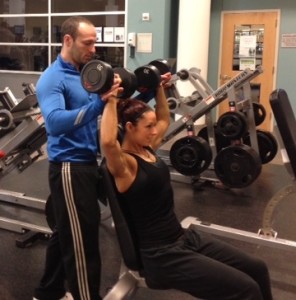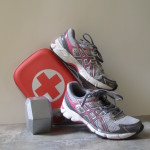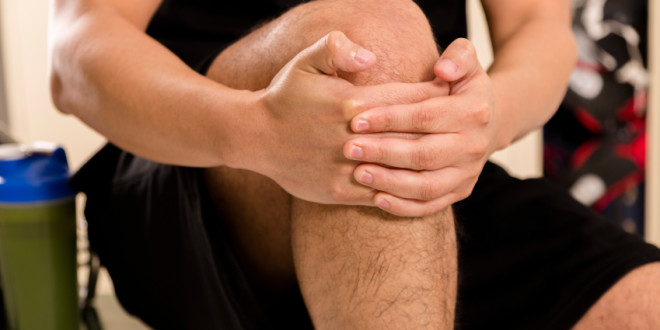by Michelle Sutton-Kerchner
Cold weather often brings joints to our attention. Even healthy joints more easily become stiff and sore. Think of the rigid posture with which we greet the winter wind. Keep them strong, even when it’s bone chilling outdoors …
Joints exist throughout the body where two or more bones meet. Like blinking our eyes or swallowing, joints smoothly function during our days without much notice. They do their part to bear weight and aid movement. We do not give a thought to their ongoing responsibility. Until they hurt.
Healthy joints require simply maintenance. You do not need an official joint-health program or special tools to keep them happy. To keep them moving well, move often!
Be Active
Along with a formal fitness routine, frequent movement best prevents stiff, sore joints. Sedentary hours can stress joints as much as time spent shoveling snow, even if you are shoveling properly. (See this week’s “Slice of Wellness” post at www.fitnessandwellnessnews.com.) Sitting at your desk, watching TV, or reading are culprits in joint stiffness. Mobility lubricates joints.

Extensive inactivity causes joints to stiffen, and the adjoining tissue to break down. Plan accordingly. If you have a project that will keep you in front of a computer all day, schedule breaks for 10-minute walks. Use a timer to alert you. Get a dog, guaranteed to have you walking several times daily. Switch positions while reading on the couch. Tend to laundry, cooking, or other chores while watching TV.
Commit to Fitness
For joint protection, focus on strengthening the muscles surrounding them. If you worry about the future of your knees from that old football injury, concentrate on strengthening thigh muscles. Strengthen your core for overall joint support. Work abs, back, and hips. Notice how these muscles cradle bones and joints when strong. Improved balance from core work also helps avoid injuries and falls. For hip-joint support, perform squats, leg presses, or use the climber machine.
Gently move your joints through their full range-of-motion to promote circulation. This helps flexibility, at any age. A recent study found age-related stiffness to be more the result of inactivity than actual age. Approximately 1,000 adults participated in the same fitness class over a 25-year period. Follow-up showed they experienced modest age-related decreases in cardio fitness and strength, but no loss of flexibility. Age is not an excuse!
Along with providing firmer support to bones and joints, a toned body travels easier. Excess weight puts a strain on hips, knees, and back. The lower half of the body is particularly at risk for cartilage damage from carrying extra pounds. For every pound lost, about four pounds of pressure is eliminated from the knees. That’s results!
If joints are bothering you, take your workout to the pool. Those with arthritis and osteoporosis comfortably accomplish aerobic and strength training in the water. You manage resistance without straining joints. Movements are fluid and not jarring. You don’t have to be a swimmer to benefit from a water workout. Check out the Center’s Group Fitness aquatic offerings. Or simply take your training session to the pool. Talk with a personal trainer.

Low-impact fitness is ideal for joint health. This can include walking, cycling, and a variety of effective, but safe, weightlifting exercises. These, along with aquatic workouts, tackle multiple joints simultaneously. A personal trainer can provide additional suggestions, along with exercises that focus on specific joints (perhaps your own “weak spot”).
Beyond Prevention: Finding Pain Relief
Physicians have banished the bed-rest prescription in most instances. Studies have proven fault with this former logic. Often, the best remedy is movement, even mild. Exercise improves your pain threshold, meaning it takes more pain before you register discomfort. It also increases flexibility, while improving your ability to manage pain.
If you find yourself chilled to the bone lately, with soreness and that occasional popping, stay flexible with a gentle workout followed by light stretching. Stretching is essential for joint health and healing. Most arthritis experts believe it is the most important form of exercise. Never stretch with cold muscles. Warm up to loosen joints, ligaments, and surrounding tendons before every stretching routine.
 Ice sore areas after a workout, and any time during a flare-up. This helps reduce inflammation and numb pain. Apply a cold pack in 20-minute intervals. If post-workout soreness lasts over 48 hours, adjust your exercises. You might have pushed too long or hard. Reduce the intensity of your workout. Give tender areas a rest by focusing on different muscle groups at your next session.
Ice sore areas after a workout, and any time during a flare-up. This helps reduce inflammation and numb pain. Apply a cold pack in 20-minute intervals. If post-workout soreness lasts over 48 hours, adjust your exercises. You might have pushed too long or hard. Reduce the intensity of your workout. Give tender areas a rest by focusing on different muscle groups at your next session.
Get treatment for injuries or chronic pain. When the cartilage at joints’ ends wears down, bones can rub together. The friction can form growths, spurs, swelling, stiffness, and forms of arthritis. Early treatment helps prevent further damage.
Work with a physical therapist and personal trainer to create a program that avoids exacerbating the injury. Often, a simple brace can stabilize the joint.
Supplements to improve joint health and reduce pain have become popular. Ask your physician for recommendations. S/he can confirm their safe use with other medications.
Plowing ahead alone, while ignoring your body’s warnings, is not a sign of strength. It is a sign you may be laid up for an extended period.
Easy Tips for Better Joint Health

Keep warm: Keep neck and shoulder area wrapped in a scarf. Scarves have become a hot fashion trend so stay wrapped indoors as well. (No one needs to know you inner fashionista has an ulterior motive.)Warm joints move easier and warm muscles pull less.
Practice good posture: Bad posture sometimes results from an injury or weakened system of muscles. An imbalance develops as muscles try to guard a weak or painful area. The body’s natural alignment attempts to compensate, which often negatively affects posture.
With the body properly aligned through good posture, you instantly appear more confident, taller, and slimmer. Muscles function better, joints are correctly aligned, movement is more efficient, and circulation improves. Pilates and yoga are effective posture-perfectors.
Use good fitness form: When weightlifting, use the wall for support. This allows the body to remain correctly aligned. Any straining done from the spine immediately will be obvious and can be corrected quickly. Face forward, keep chin and head held high, knees slightly bent, and abs tightened. Now, you can work the intended areas without harm to joints and elsewhere.
Lighten your load: Spend the extra 90 seconds when emptying the car by packing lighter bags. You may have more to carry, but you will struggle less. Use proper lifting techniques. A personal trainer is happy to demonstrate this. Rely on larger muscles and joints to transport heavy objects. Hands are handy carriers but more delicate.
Practice safety: Helmets, elbow and knee pads, and wrist guards have saved many from serious injury. Use them as recommended, especially when bike riding, skating, skateboarding, and participating in high-impact sports. Protect yourself from the potential of lifelong pain or injury. Some prefer wearing braces during any extensive activity to protect already weak or injured areas.
Give your joints a thought before you are forced to notice them.
Sources
“Exercise and Pain Relief,” by Gina Shaw at www.webmd.com
“Tips to Keep Your Joints Healthy,” at www.webmd.com
www.mayoclinic.com
Image Credits
Man with scarf: www.flickr.com/photos/bekathwia/6223606453/
 Fitness & Wellness News Your Source for Fitness News, Wellness News, Health News, and Nutrition News!
Fitness & Wellness News Your Source for Fitness News, Wellness News, Health News, and Nutrition News!




